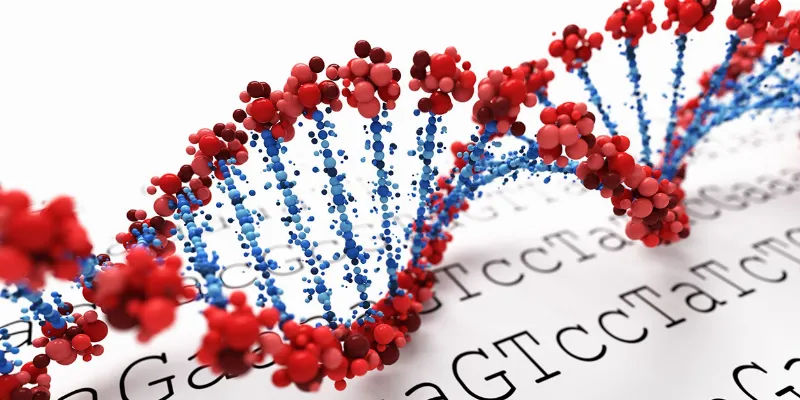Discovery of Damaged DNA in the Brain Could Be the Key to Solving Parkinson's Disease

13 October 2023
Researchers at the University of Copenhagen have discovered that damage to mitochondrial DNA in brain cells triggers and spreads Parkinson's disease-like pathology. The detection of damaged mitochondrial DNA in the blood could serve as an early biomarker for Parkinson's disease, offering hope for improved diagnostics and treatment monitoring.
Damaged mitochondrial DNA fragments in brain cells are released into the cell, becoming toxic and spreading to neighboring cells. The findings, which were published in The Lancet Microbe, suggest that damaged mitochondrial DNA (mtDNA) might not only initiate Parkinson's disease but also propagate it throughout the brain.
Until now, the understanding of Parkinson's disease, a chronic condition affecting over 10 million people worldwide, has been largely centered on genetic factors responsible for familial cases. However, the bulk of PD cases had unidentified causes. This new research could transform that understanding.
Led by Professor Shohreh Issazadeh-Navikas, the team found that the mitochondria, essential energy producers in brain cells, undergo damage which disrupts their DNA.
"For the first time, we can show that mitochondria, the vital energy producers within brain cells, particularly neurons, undergo damage, leading to disruptions in mitochondrial DNA[LP1]. This initiates and spreads the disease like a wildfire through the brain. Our findings establish that the spread of the damaged genetic material, the mitochondrial DNA, causes the symptoms reminiscent of Parkinson’s disease and its progression to dementia," explains Issazadeh-Navikas.
By examining human and mouse brains, the researchers identified that damage to the mitochondria in brain cells becomes exacerbated when these cells have defects in their anti-viral response genes. As a result, small fragments of this damaged DNA are released into the cell, becoming toxic.
Issazadeh-Navikas likens the spread of these toxic DNA fragments to "an uncontrolled forest fire sparked by a casual bonfire." These fragments can move to neighboring and even distant brain cells, further spreading the disease.
A noteworthy aspect of this research is its potential clinical implications. "If damaged mtDNA can be detected in blood, it could serve as an early biomarker for the disease," said Issazadeh-Navikas.
This would revolutionize early detection, disease monitoring, and even drug development. The team is hopeful about the possibility of detecting damaged mtDNA in the bloodstream, allowing for disease diagnosis or treatment monitoring through a straightforward blood test.
Moreover, the research also points to potential therapeutic strategies. By restoring normal mitochondrial function, it might be possible to address the mitochondrial dysfunctions implicated in the disease.

The research received funding from the European Union's Horizon 2020 Research and Innovation Program, the Lundbeck Foundation, and the Danish Council for Independent Research–Medicine. Both Issazadeh-Navikas and Beck have disclosed no relevant financial relationships.
Mitochondrial DNA damage triggers spread of Parkinson’s disease-like pathology
Abstract: In the field of neurodegenerative diseases, especially sporadic Parkinson’s disease (sPD) with dementia (sPDD), the question of how the disease starts and spreads in the brain remains central. While prion-like proteins have been designated as a culprit, recent studies suggest the involvement of additional factors. We found that oxidative stress, damaged DNA binding, cytosolic DNA sensing, and Toll-Like Receptor (TLR)4/9 activation pathways are strongly associated with the sPDD transcriptome, which has dysregulated type I Interferon (IFN) signaling. In sPD patients, we confirmed deletions of mitochondrial (mt)DNA in the medial frontal gyrus, suggesting a potential role of damaged mtDNA in the disease pathophysiology. To explore its contribution to pathology, we used spontaneous models of sPDD caused by deletion of type I IFN signaling (Ifnb–/–/Ifnar–/– mice). We found that the lack of neuronal IFNβ/IFNAR leads to oxidization, mutation, and deletion in mtDNA, which is subsequently released outside the neurons. Injecting damaged mtDNA into mouse brain induced PDD-like behavioral symptoms, including neuropsychiatric, motor, and cognitive impairments. Furthermore, it caused neurodegeneration in brain regions distant from the injection site, suggesting that damaged mtDNA triggers spread of PDD characteristics in an “infectious-like” manner. We also discovered that the mechanism through which damaged mtDNA causes pathology in healthy neurons is independent of Cyclic GMP-AMP synthase and IFNβ/IFNAR, but rather involves the dual activation of TLR9/4 pathways, resulting in increased oxidative stress and neuronal cell death, respectively. Our proteomic analysis of extracellular vesicles containing damaged mtDNA identified the TLR4 activator, Ribosomal Protein S3 as a key protein involved in recognizing and extruding damaged mtDNA. These findings might shed light on new molecular pathways through which damaged mtDNA initiates and spreads PD-like disease, potentially opening new avenues for therapeutic interventions or disease monitoring.











Comments
No Comments Yet!